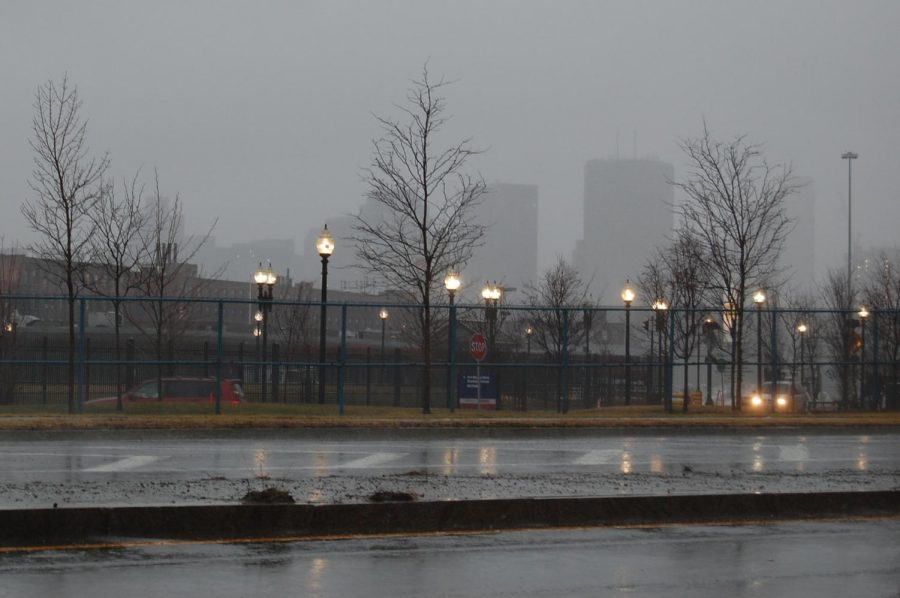Op-ed: Does Boston have enough climate change precautions in the aftermath of storms like Hurricane Ida?
“Boston Rain” by claudiadaggett is licensed under CC BY-NC 2.0
Climate change continues to negatively impact the world.
September 27, 2021
I think it is safe to say that climate change is one of the biggest threats to our world, and one cannot help but notice it within everyday life. Extreme weather has been hitting Boston hard. Within the first few days of me being back in the city, the remnants of Hurricane Ida descended upon Boston. Ida was labeled as a Category 4 storm with winds up to 150 mph before losing strength over land, but the East Coast was not spared the havoc it wreaked. In Boston, heavy rainfall descended on the city, causing severe flooding that shut down the Massachusetts Turnpike and parts of the Orange Line.
Events like this prompt us to ask: How prepared is Boston to deal with and prevent climate change — and how can we best handle storms like Ida? In my opinion, the city (and the whole country) should be taking as many initiatives and precautions as possible to protect our climate from further destruction. In 2016, the City of Boston launched Climate Ready Boston, an ongoing effort to reduce extreme temperatures and rising sea levels in the Greater Boston area. It presents several strategies ranging from maintaining up-to-date climate projections to creating a coastal protection system to address flooding risks.
While Boston’s climate plan certainly seems more in-depth than other cities around the United States, can it do enough? If climate change shows Boston citizens one thing, it is that flooding is one of the greatest threats to this city. Hurricane Ida was only one example of how prone Boston is to flooding. In 2013, Boston was ranked as the eighth coastal city in the world most vulnerable to flooding. Sea levels in Boston rise an inch every eight years, and the situation is only getting worse. The city is looking to combat this problem by raising vulnerable streets, and building watertight doors on the MBTA. One example is Main Street in Charlestown, which will be elevated two feet — that alone will cost around $3 million.
So, does Boston have the climate change precautions it needs in order to keep the city safe? I am relieved that the city is attempting to do its part in combating climate change. However, after seeing the damage done by Hurricane Ida to the city and the country, there is still a long way to go. It is clear the city of Boston has a set of plans laid out, but these plans must go into motion since we are running out of time. Boston’s sea level is estimated to rise to up to 40 inches by the 2070s. This is less than fifty years away and is not that far away.
As someone from the younger generation, it frustrates me to see climate change not being taken seriously. Powerful politicians like Senate Minority Leader Mitch McConnell have made dangerous statements about climate change like, “For everyone who thinks it’s warming, I can find somebody who thinks it isn’t.” These are powerful individuals denying a problem that could further these dangerous scenarios in our future. Extreme temperatures, flooding and unpredictable weather are only a small sample of what could occur, and it is my hope that I can further educate myself and my fellow Northeastern students on this topic. Our school is already enacting certain measures to combat climate change, like the Climate Justice Action Plan, which recognizes Northeastern’s role in the current climate crisis and plans to make the university completely carbon-free. We must do everything in our power to save the one world that we have and undo the damage that has been inflicted upon our climate.
Ava Alaeddini is a second-year English major. She can be reached at alaeddini.a@northeastern.edu.







